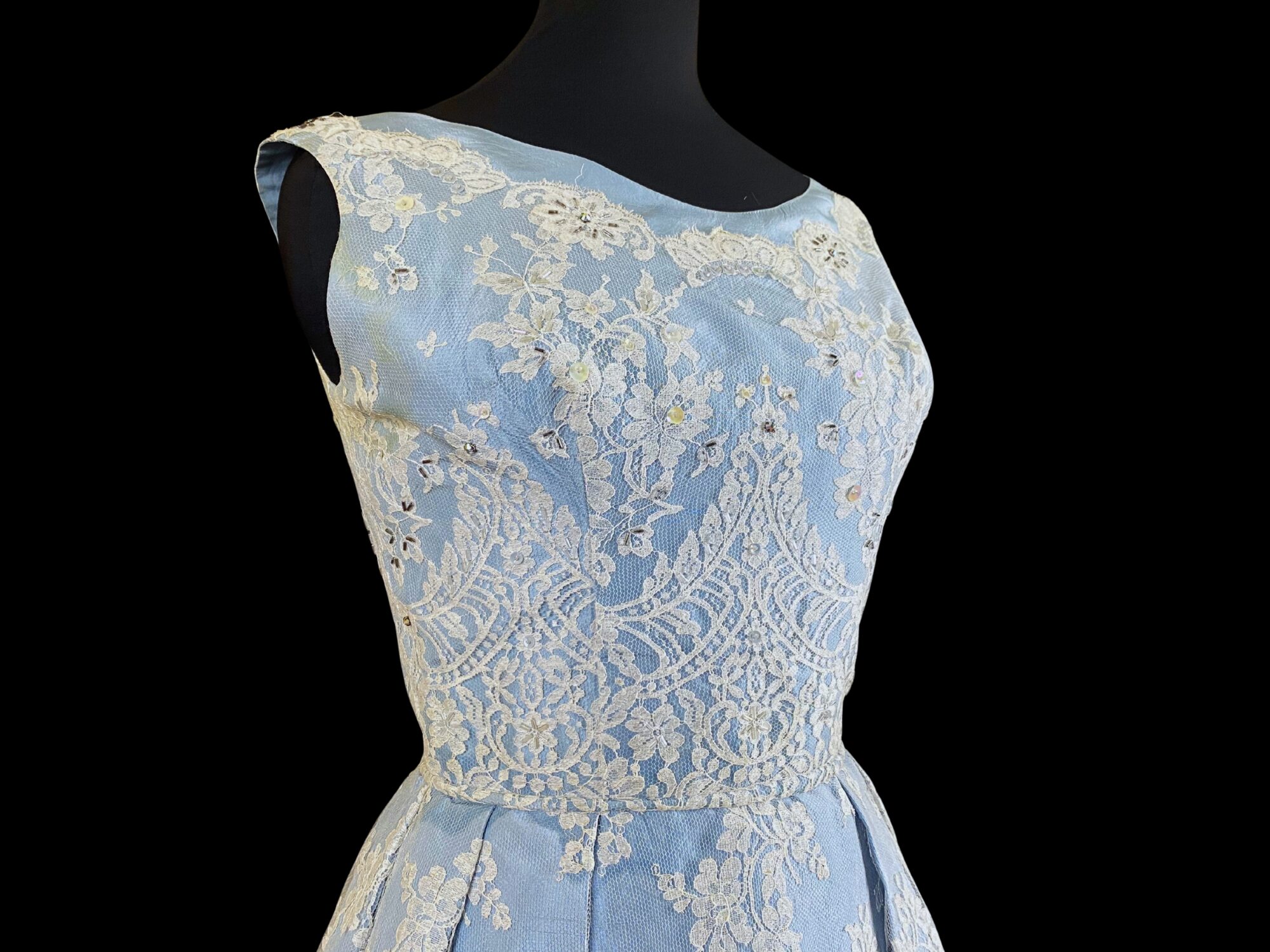Collection Stories
The Harriet Woon evening dress dates from the mid to late 1860s. It is reminiscent of the styles in Gone with the Wind that kept women physically distanced from others by the sheer volume of their skirts. Unlike later Victorian styles, it did allow women to expose the erogenous zone of the décolletage, the neckline and cleavage.
The dress is made from four and a half metres of fine oyster-coloured silk taffeta with woven black stripes, embellished with black velvet ribbon. The bodice is secured with hooks and eyes while the skirt has silk-covered buttons down the centre front, purely decorative, because access is from a side seam opening. A decorative bow is attached at the back with three-tiered black lace-edged trimmings.
Two different dressmakers may have made the dress as the bodice is hand-sewn and lined with polished cotton while the skirt has machine-stitched seams and is lined with cotton muslin. The dress was probably made in Whanganui and worn to one of the numerous balls held in the region during the 1860s.
Whanganui was well supplied with women dressmakers and milliners. Six local businesses run by women advertised in the local newspapers and another five were listed in trade directories. One was Mrs Reilly who advertised that she made ‘Ladies’ Ball Dresses in the latest fashion’ costing 14 to 20 shillings, $143 in today’s money. A fashionable bonnet cost 15 to 20 shillings. A bonnet was much cheaper if clients provided their own materials.
The owner of this beautiful dress was Harriet Woon, née Penfold. Born in 1837 in Surrey, England, she was the second eldest child of Harriet (née Mansell) and Stephen Penfold. The Penfolds immigrated to New Zealand on the Barque Birman, arriving in Wellington in March 1842. The family lived in Wellington for three years, during which time three sons were born, all dying within a few months.
The Penfolds moved to New Plymouth where two more children were born in 1848 and 1851. Tragedy struck the family again in 1851 with the death of Stephen at the age of forty-five. By the mid-1850s the Penfolds were living in Whanganui.
In November 1857 the younger Harriet, then aged twenty, married twenty-one year old Edwin Turner Woon, a son of the Reverend William Woon. The marriage ceremony was conducted by the Reverend Woon in his house on Wilson Street.
In partnership with George Bevan, Edwin owned a drapery store on Taupō Quay near Pākaitore. The partnership split and Edwin took over as a sole trader in 1864. His business was not successful and by the end of 1867 he was advertising for work as an Interpreter and Native Lands Agent. Edwin’s interpreter work saw him travelling the country. By 1877 he was living in Gisborne where he remained until he died in November 1887 at the age of fifty-two. It is unclear if Harriet went to Gisborne with Edwin. The couple had no children and by the time women were appearing on the electoral rolls, Harriet was living in Castlecliff and supporting herself as a music teacher. She remained in Castlecliff, living with her great niece Ellen Davis, when she died, aged eighty-three, on 7 July 1920. This beautiful dress was treasured and cared for by Harriet’s extended family until it was donated to the Museum in 1983.
By Trish Nugent-Lyne, Kaihāpai Taonga/Collections & Curatorial Lead at Whanganui Regional Museum.
Image: Harriet Woon’s evening dress
1860s. Maker: unknown.
Photographed by Kathy Greensides
WRM 1982.35.1
View the full-length image.






